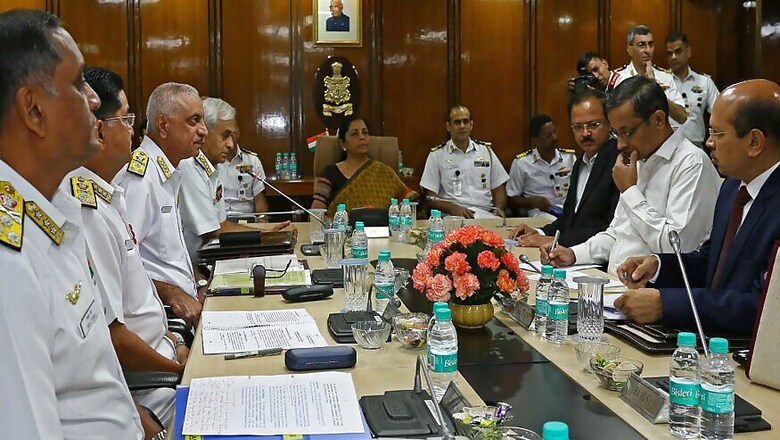
views
New Delhi: The four-day Naval Commanders’ Conference concluded on Friday where the top brass of the Indian Navy took stock of the operations, training and administrative activities undertaken by the navy in the last six months. During the conference, Indian Navy Commanders discussed ‘sustained presence’ and ‘mission based deployment’ of Indian ships in the Indian Ocean Region (IOR). The move is being seen as a counter to keep Chinese presence in the IOR in check, particularly after tensions between the two nations were high following the Doklam standoff.
“As part of the annual theme, the Commanders brainstormed to fine tune the execution of ‘mission based deployment’ involving ships, aircraft and submarines beyond the immediate neighbourhood for providing sustained presence in the IOR. Critical enablers such as refits/ maintenance philosophy, op-logistics and HR measures for sustained operational effectiveness were also discussed in detail,” a statement from the Ministry of Defence said.
It added, “The Commanders resolved to focus efforts on the Navy’s ability to deploy and sustain in tandem with the new Mission-based deployment concept, which would result in greater presence and visibility in IOR.”
The Indian Ocean Region (IOR) stretches from the Persian Gulf to the Malacca Strait and includes several key areas that are of strategic importance to China. Chinese firms have gained possession of a deep water port in Gwadar, Pakistan and a commercial port in Hambantota, Sri Lanka. The Indian Navy is now looking to expand its footprint in the region to maintain the balance of power. While the Indian Navy currently has 138 warships and 235 aircraft, reports suggest that it plans to expand to 212 warships and 458 naval aircraft over the next ten years.
India is also keen to buy US-made Sea Guardian drones for its navy to monitor activities along the coastline, particularly in the Indian Ocean region. The decision to sell the unarmed drones to India was taken in June, after a meeting between PM Modi and US President Trump. Now, the US is all set to cut through the red tape and deliver 22 of these drones to India, which will cost $2-3 billion.
The Sea Guardian, the naval variant of the MQ-9 Reaper Drone, has a range of over 1,800 kms and can attain an operational altitude of 50,000 feet. It can operate for 14 hours at a stretch and can attain a maximum speed of 300 kmph. The variant that India is expected to buy cannot carry weapons and can only be used for surveillance purposes.












Comments
0 comment